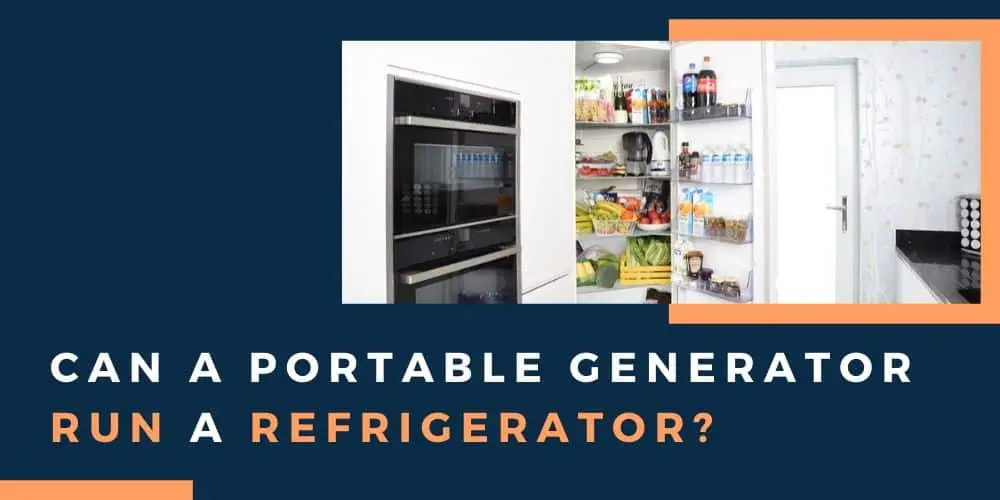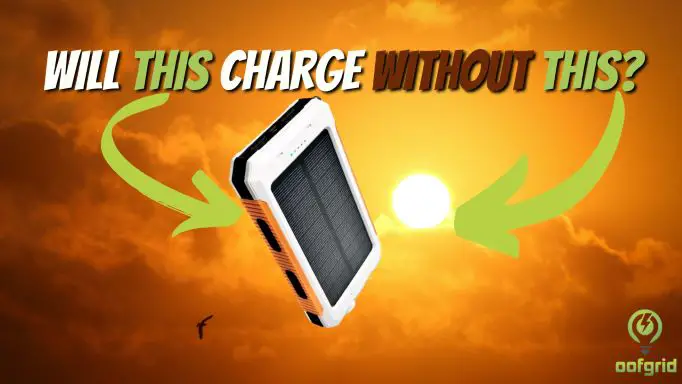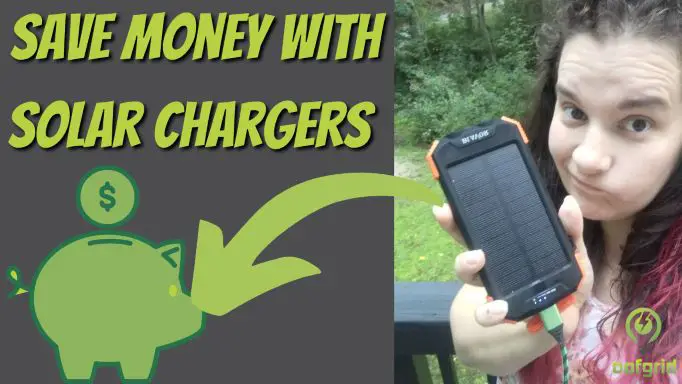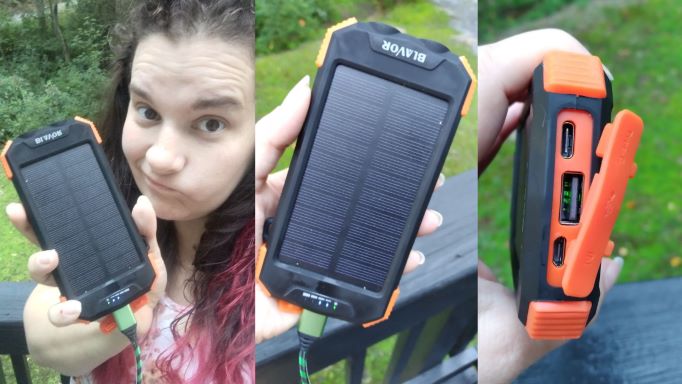Can a portable generator run a refrigerator? Generators are generally purchased to power two major classes of appliances: refrigerators and HVAC equipment. Most of us know that you can run a refrigerator, heater and other heavy-duty appliances when running a backup generator designed to provide power for your home.
Can a portable generator run a refrigerator? A generator with 3000 watts must have enough starting watts to handle the compressor load as the refrigerator turns on. This means that you can run a generator to keep the refrigerator going if it has at least 3000 watts and 3300 starting watts.
Let us get into the detail and ensure you purchase the best generator to run your refrigerator in an emergency or power outage.
Contents
Can a portable generator run a refrigerator?
Can a portable generator run a refrigerator? The short answer is yes, if you use a powerful enough portable generator. For example, you cannot run a generator with 2000 watts and keep the average large refrigerator going.
A generator with 3000 watts must have enough starting watts to handle the compressor load as the refrigerator turns on. This means that you can run a generator to keep the refrigerator going if it has at least 3000 watts and 3300 starting watts.
Below is an example of a suitable generator to run a refrigerator
- 5000 Peak Watts and 3900 Rated Watts at Less Than 3% THD; Telescoping Handle; Gas Powered; Remote Start With...
- Features a 5–20R 120V Duplex Household Outlet, an RV-Ready Tt-30R 30 Amp Outlet and Two USB Outlets –...
- Led Data Center: Rotating Digital Display Shows Fuel Level, Power Output, Remaining Run Time, Voltage Output,...
- Extremely Quiet, Extremely Fuel Efficient: as Low as 52 dBA Noise Output and Up to 18 Hour Run Time on a 3. 4...
- All Westinghouse Portable Generators are Functionally Tested in the Factory and May Contain Minimum Residual...
Last update on 2025-04-14 / Affiliate links / Images from Amazon Product Advertising API
How do I know how large of a generator I need to supply power to my refrigerator?
The wattage required by the refrigerator should be on the nameplate. If the refrigerator only shows the voltage and amperage, multiply these two numbers to get the watts required to power it.
However, refrigerators require an extra “jolt” or surge of power when the compressor motor starts up. The generator must be able to supply this surge power if the fridge is to come on. If it can’t, you’ll either kill the generator or the fridge will fail to start up.
How much power does the refrigerator need when starting up? Multiply the running wattage or the wattage listed on the nameplate by 1.5. If your fridge needs 2000 watts to run, play it safe by connecting it to a 3000 watt generator.
A small 1000 watt refrigerator only needs 1500 watts of surge power. That means a 2000 watt generator could support the small 1000 watt fridge both at startup and continual operations, but you can’t connect two 1000 watt fridges and turn them on if you want them to stay on.
See our Wattage Calculator Guide here! It will help you work out the size of portable generator you’ll need.

What is the power draw of the average refrigerator?
The average household refrigerator needs 1500 to 2000 watts of power to run once it has started up. This means the average refrigerator needs 2000 to 2500 watts of power to start up. It also means that a 2000 watt generator will supply the average refrigerator once it is running.
However, your generator either needs to be more powerful than this or have an inverter capable of delivering several hundred watts of surge power long enough for the compressor to start up.
Our Choice of Generator to run a refrigerator?
- Extremely quiet operation minimizes noise; EPA III and CARB Compliant
- 212cc 4-stroke OHV engine produces 3800 surge watts and 3400 rated watts with a half-load runtime of up to 8.5...
- Fuel shutoff maximizes the generator’s lifespan by using up the remaining fuel in the carburetor before...
- Produces clean power to prevent damage to sensitive electronics such as smart phones, tablets and laptops
- Includes two three-prong 120V receptacles, one AC 120V NEMA TT-30R RV receptacle, one 12V DC receptacle, one...
- Advanced Open Frame Inverter Design: 50% quieter and 20% lighter than a traditional Champion 3500-watt...
- Quiet Technology and Extended Run Time: 64 dBA is great for RVs, tailgating, your next project or home backup,...
- Clean electricity for sensitive electronics: RV Ready with a 120V 30A RV, plus two 120V 20A household outlets...
- Parallel Ready: Increase your power output by connecting up to two 2800-watt or higher inverter or digital...
- Champion Support: Includes 3-year limited warranty with FREE lifetime technical support from dedicated experts
Last update on 2025-04-10 / Affiliate links / Images from Amazon Product Advertising API
What do you need to run a freezer?
A 2000 watt portable generator can easily support a 500 watt deep freezer, though the load at startup is closer to 700 watts. This means a standard portable generator could support two small freezers, though it may support a small freezer and mini-fridge.
An Energy Star rated freezer requires around 1200 watts of power at startup and less than 1000 watts of continuous power.
Read our TOP 10 BUDGET GENERATOR review for more options before purchasing a portable generator.
How long will a generator support my refrigerator?
Let’s use a mid-sized refrigerator that needs 1200 starting watts and 700 watts of continuous power. We’ll assume you have a 3000 watt portable generator. The extra power capacity means you can run lights or other small appliances in addition to running the refrigerator.
More importantly, the generator can support the refrigerator’s continuous load in energy saving “eco-mode”. A 3000 watt portable generator will produce 500 watts for ten hours at quarter power. And it would support a 700 watt baseload.
Given this rate of fuel consumption, the generator will run eight to nine hours on a single tank of gas.
Can I run both the refrigerator and air conditioner from the same generator?
The average household air conditioner isn’t going to be supported by a portable generator. However, a window AC requires about 1500 watts of continuous power and 2200 watts of surge power.
You could run the window AC or a refrigerator from the average 2000 watt inverter generator. Or you could run both with a 3500 watt or better generator. Always balance the peak load and continuous load with the safe limits for the generator.
See our Wattage Calculator Guide here! It will help you work out the size of portable generator you’ll need.
What features should I look for in a portable generator intended to run a refrigerator?
A die-hard camper may not care about a pull-cable to start the generator. However, homeowners trying to set up a generator to keep a fridge full of food from going bad can’t risk a broken pull cable.
Many homeowners lack the physical strength to get the generator to start with a single pull. This makes electric push-button starters essential for this application.

Another factor to consider is noise. If you’re camping, you’ll be able to set the generator twenty or thirty feet from the RV or campsite. Noise ordinances can be met by moving the generator further away from others’ campsites.
A portable generator intended to power a refrigerator would ideally run all night. And since it is being run in the average suburban neighborhood, the noise is going to bother someone, no matter where the generator sits. Consider looking for relatively quiet generators.
The difference between a 60 dBa and 70 dBa generator will be your quality of sleep. It may also allow you to run the generator though the power is out, though many jurisdictions suspend noise ordinances when there is an emergency.
Buy the smallest generator that will meet your baseline power needs. For example, if you plan on running a refrigerator that requires 1500 watts, get a generator with at least 2000 watts of baseline power. Then you can run the refrigerator plus a few lights and other little items. And you won’t accidentally kill the generator because you turned on a fan.
However, there’s no need to buy a 4000 watt generator if your baseline load would be around 2000 watts. Not only is this a waste of money, but the larger generator will burn through fuel faster.
Wattage Guide for household appliances
| Appliances | Running Watts | Start Up Watts |
|---|---|---|
| Clock Radio | 3 W | 5 W |
| Phone Charger | 3 W | 5 W |
| Google Nest | 5 W | 5 W |
| Tablet Computer | 10 W | 15 W |
| 32 In LED TV | 20 W | 60 W |
| Air Purifier | 25 W | 30 W |
| Humidifier | 35 W | 40 W |
| Cooling Fan | 40 W | 60 W |
| Freezer | 40 W | 60 W |
| PS4 or Xbox | 50 W | 120 W |
| Lightbulb 60 W | 60 W | 60 W |
| Water Dispenser | 100 W | 100 W |
| Refrigerator | 150 W | 300 W |
| American Style Refrigerator | 200 W | 500 W |
| Garden Strimmer | 300 W | 500 W |
| Submersible Water Pump | 350 W | 500 W |
| Music Stereo | 400 W | 400 W |
| Vacuum Cleaner | 400 W | 1000 W |
| Toaster | 700 W | 1900 W |
| Electric Drill | 800 W | 1100 W |
| Coffee Maker | 800 W | 1000 W |
| Washing Machine | 800 W | 800 W |
| Lawn Mower | 1000 W | 1500 W |
| Air Fryer | 1400 W | 1400 W |
| Air Compressor | 1500 W | 4800 W |
| Oven | 2000 W | 2000 W |
| Home Air Conditioner | 1200 W | 4000 W |
| RV Air Conditioner | 1300 W | 4500 W |
| Belt Sander | 1400 W | 2400 W |
| Hairdryer | 1400 W | 1400 W |
| Hammer Drill | 1700 W | 1600 W |
| Air Compressor – 1 HP | 1600 W | 4800 W |
| Welding Rig | 2500 W | 3000 W |
Take a look at our GENERATOR SIZE CALCULATOR to work out what wattage generator to buy.
Do I need an inverter generator to run a refrigerator?
No, not if the generator’s peak load can handle the surge power demand by the refrigerator. However, inverters do have a number of advantages.
You could charge handheld devices like smartphones and tablets from the inverter without putting much of a load on the generator, assuming the generator isn’t exactly matched to the refrigerator’s load. And the inverter acts as a backup power source.
When the generator is off, the inverter can still power LED lanterns and other small devices for an hour or more.
Another alternative for running smaller devices and charging phones and laptops would be a power station or power bank. Read our complete guide on these portable power sources here.
We hope that we have answered the question: Can a portable generator run a refrigerator?
Here’s the TOP 5 BEST SELLING GENERATORS on Amazon
- At less than 49 pounds, this inverter is one of the lightest 4000-watt inverters in the industry
- 64 dBA from 23 feet is perfect for camping, tailgating or to backup a few home essentials, with 4000 starting...
- The optional parallel kit enables this inverter to connect with another 4000-watt Champion inverter to double...
- Includes a 120V 25A TT-30R outlet, a 120V 20 A household duplex outlet (5-20R) with clean electricity (less...
- Includes 3-year limited warranty with FREE lifetime technical support from dedicated experts
- 149cc engine generates up to 3600 surge watts and 2900 rated watts
- Produces clean power to prevent damage to sensitive electronics such as smart phones, tablets and laptops
- Ultralight body weighs in at a mere 46 pounds for easy transport and torage
- Fuel shutoff maximizes the generator’s lifespan by using up the remaining fuel in the carburetor before...
- Includes two three-prong 120V receptacles, one TT-30R RV receptacle, one 12V DC receptacle, two 5V USB ports,...
- 𝗣𝗼𝘄𝗲𝗿𝗳𝘂𝗹 𝗢𝘂𝘁𝗽𝘂𝘁: 4000 peak watts and 3200 running watts, gas powered...
- 𝗠𝘂𝗹𝘁𝗶-𝗢𝘂𝘁𝗽𝘂𝘁 𝗢𝗽𝘁𝗶𝗼𝗻𝘀: Includes 2*120V AC ports, 1*12V DC...
- 𝗟𝗼𝗻𝗴 𝗥𝘂𝗻𝘁𝗶𝗺𝗲: Runs for up to 14 hours at 25% load with ECO mode, 2 gallon...
- 𝐋𝐨𝐰 𝐍𝐨𝐢𝐬𝐞: Under 72 dBA from 23FT away, this generator provides steady power for your...
- 𝗟𝗶𝗴𝗵𝘁𝘄𝗲𝗶𝗴𝗵𝘁 𝗮𝗻𝗱 𝗣𝗼𝗿𝘁𝗮𝗯𝗹𝗲: Only 56lbs, easy...
- 51 lbs [Extreme light weight]
- 12oz gas tank, 4.5 hrs run time @ half load
- 3200W Rated / 4000W Peak
- RV ready, AC ready, Fridge ready
- [Versatile Power Supply] With 3500 peak watts and 3000 running watts, our generator can easily power a small...
- [Extended Run Time] Use Eco mode to extend your run time up to 8.3 hours @25% load (750w load) or 4.5 hours at...
- [Power More Appliances] Our generator features 1 x 120V 30 amp RV outlet, 2 x 120V 20 amp outlets, and 2 x 5V...
- [Clean Power] Inverter technology produces clean pure sine wave power, providing safe, high-quality current...
- [Quiet Operation] At just 58 decibels in Eco mode (at a distance of 23 feet), our generator is as quiet as a...
Last update on 2025-04-14 / Affiliate links / Images from Amazon Product Advertising API














